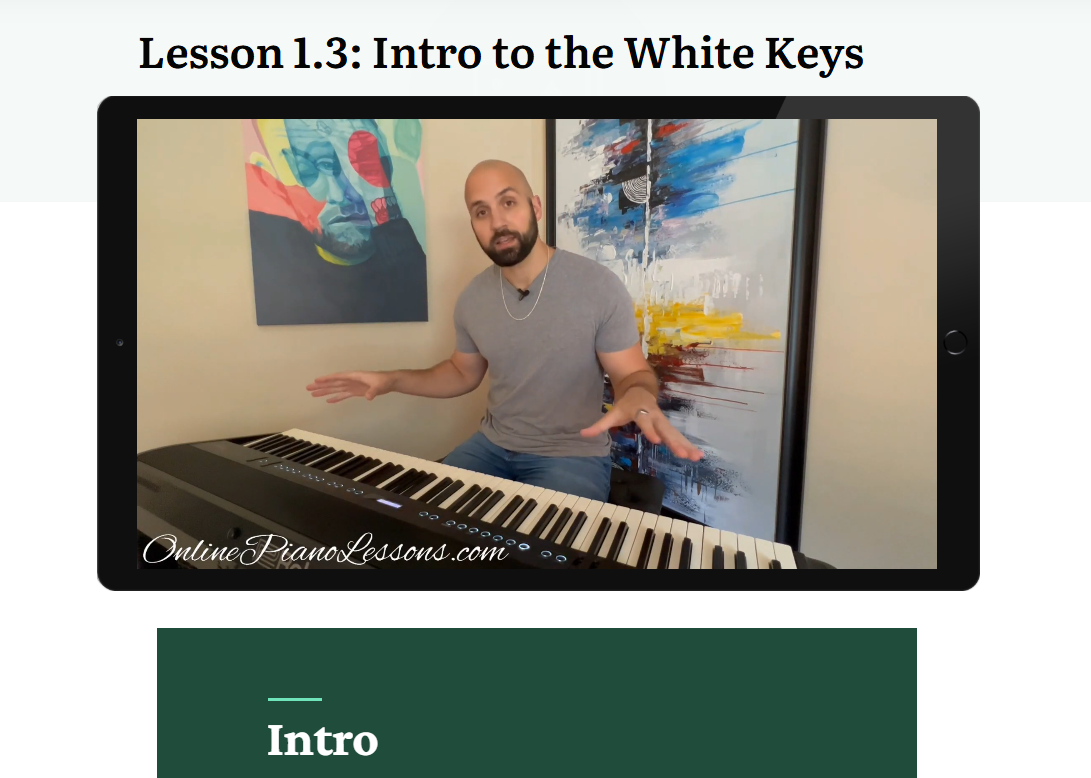Harmonizing a melody on the piano is one of the most practical and creative skills a pianist can learn. This guide explains what harmony is, practical approaches to how to harmonize a melody, step-by-step methods for how to harmonize a melody on the piano, and musical ideas you can use right away. Whether you’re a beginner who wants to accompany singers or an intermediate player looking to write arrangements, this guide will give you reliable tools and exercises.
What Does It Mean To Harmonize?
To harmonize means to provide supporting notes (chords or intervals) that accompany a melody so that the combined sound is musically satisfying. On the piano, harmonizing a melody can range from simple block chords under a sung line to complex four-part voicings and reharmonizations. Learning how to harmonize means understanding chord function, voice-leading, and how to choose chords that support the emotional shape of the melody.
When asking how to harmonize a melody, you’re really asking three smaller questions at once:
- Which chords fit the melody notes?
- When should those chords change?
- How should the chords be voiced on the piano?
Answering those will give you practical confidence at the keyboard.
The Basic Tools You Need On Piano
Before you begin learning how to harmonize, be comfortable with these piano fundamentals:
- Know major and minor triads and their inversions on piano.
- Know basic seventh chords (maj7, dom7, m7).
- Be able to identify the key of a melody.
- Be able to sing or hum the melody while finding the root notes with your left hand.
These building blocks make the process of how to harmonize a melody immediate and repeatable.
Step-By-Step: How To Harmonize A Melody On Piano (Simple Method)
This approachable method answers the question how to harmonize a melody in four clear steps. Use it for pop songs, hymns, or simple tunes.
1 — Find the Key
Determine the tonal center. Sing the melody and find the “home” note on the piano. Knowing the key tells you which chords are naturally available.
2 — Identify Strong Beats
Decide where the strong beats or phrase points are (typically beats 1 and 3 in 4/4). Ask yourself when the harmony needs to change. This is essential to how to harmonize a melody because changing chords too often or too rarely will affect the emotional flow.
3 — Map Melody Notes to Chord Tones
On piano, test which triads contain the melody note at the moment you want a chord change. If the melody note is the 3rd of a chord, that chord will often create a satisfying color. Repeat this exercise to internalize which chords match which scale degrees; it’s the core of how to harmonize a melody.
4 — Choose Voicings and Play
Use root position or first inversion chords in the left hand while the right hand plays the melody. Keep the left hand simple: roots on beat one and chord tones filling the rest of the bar. Experiment with inversions to smooth bass movement—this is central to learning how to harmonize gracefully on piano.
Practical Example: Harmonizing a Short Phrase
Take a simple melody in C major: E – D – C – G. Here’s a quick run-through of how to harmonize a melody for that line:
- E over C major (C–E–G) — E is the 3rd, so C major fits well.
- D over G major (G–B–D) or D minor (D–F–A) depending on the flavor you want — on piano, G major gives a brighter pull.
- C over C major — tonic.
- G over G major — dominant to lead back to C.
Play the chords in the left hand and the melody in the right hand on the piano. Try variations: use C/E (first inversion) to create smoother bass movement, or add a G7 at the end for stronger resolution. This is a small, hands-on lesson in how to harmonize a melody naturally.
Common Harmonic Options To Use When Learning How To Harmonize
Here are chord choices you’ll use constantly while learning how to harmonize on piano:
- I, IV, V (major key staples) — the simplest path for beginners learning how to harmonize a melody.
- vi (relative minor) — introduces a melancholy color while staying diatonic.
- ii and iii — useful passing chords that add motion.
- vii° or viiø7 — useful for creating tension before a resolution.
- Secondary dominants (V/V, V/ii) — spice up your reharmonizations once you’ve mastered the basics of how to harmonize.
On the piano, practice each of these chord types over common melody tones until the choices become intuitive.
Voice Leading And Smoothness
A big part of learning how to harmonize effectively is voice leading—moving each voice (bass, tenor, alto, soprano) by small intervals. On piano, use inversions and common tones to keep hands close together. For example, when moving from C to Am, keep the E in the top voice if it’s present in the melody. Good voice leading makes your arrangements sound effortless and is a central tenet of how to harmonize a melody convincingly.
Reharmonization: Creative Approaches
Once you can comfortably answer how to harmonize a melody with diatonic triads, explore reharmonization:
- Substitute vi for I to give a melancholic twist.
- Use iii in place of I when the melody note allows it.
- Insert a ii–V–I to create a jazzier cadence.
- Try modal mixture (borrowed chords like bVII or bIII) for dramatic color.
These techniques expand your toolkit for how to harmonize beyond the obvious choices.
Rhythm, Texture, And Accompaniment Patterns
Knowing how to harmonize a melody also includes choosing rhythm and texture. On piano you can:
- Play block chords on beats 1 and 3 for a classic singer-accompaniment sound.
- Use arpeggiated patterns for a flowing, meditative vibe.
- Create ostinatos—repeating left-hand patterns that anchor the harmony while the right hand varies.
- Use sparse voicings (root + 3rd) for a delicate ballad feel.
Rhythmic choices shape how the harmony supports the melody, so experiment on the piano to find the best match.
Exercises To Practice How To Harmonize
- Take a simple melody and harmonize it using only I, IV, V. Repeat in all keys on piano.
- Harmonize the melody again adding vi and ii. Compare colors.
- Practice voice leading: move one chord tone at a time between chord changes on piano.
- Reharmonize: replace I with vi or iii and note the emotional change.
- Transcribe a song and write the chord progression, then play the melody with your chosen harmonies.
These exercises will make how to harmonize second nature.
FAQ
What is the easiest way to start learning how to harmonize?
Begin with I–IV–V triads. Match melody notes to chord tones and keep left-hand voicings simple on piano.
How do I choose which chord fits a melody note?
Look for chords that contain the melody note as root, 3rd, or 5th. Try each candidate on the piano and listen.
Can I harmonize any melody?
Yes. Most melodies fit within a key; find the key and map chord choices. Reharmonization gives creative freedom once you master basics.
How important is voice leading when you learn how to harmonize?
Very important. Smooth voice leading makes harmonizations sound professional and reduces hand movement on piano.
Should I always use full chords when I harmonize a melody?
Not always. Sometimes sparse voicings or single bass notes provide better support. The piano allows for many textures—experiment.
How long before I can harmonize reliably?
With daily focused practice, many players can harmonize simple melodies in weeks. Mastery grows with experience and listening.





 Hi, I'm Thomas, Pianist Composer,
Hi, I'm Thomas, Pianist Composer,  I love playing piano, creating new melodies and songs, and further developing my online piano course and making updates/additions to my site OnlinePianoLessons.com!
I love playing piano, creating new melodies and songs, and further developing my online piano course and making updates/additions to my site OnlinePianoLessons.com!  Now that is what I call fun!
Now that is what I call fun!





